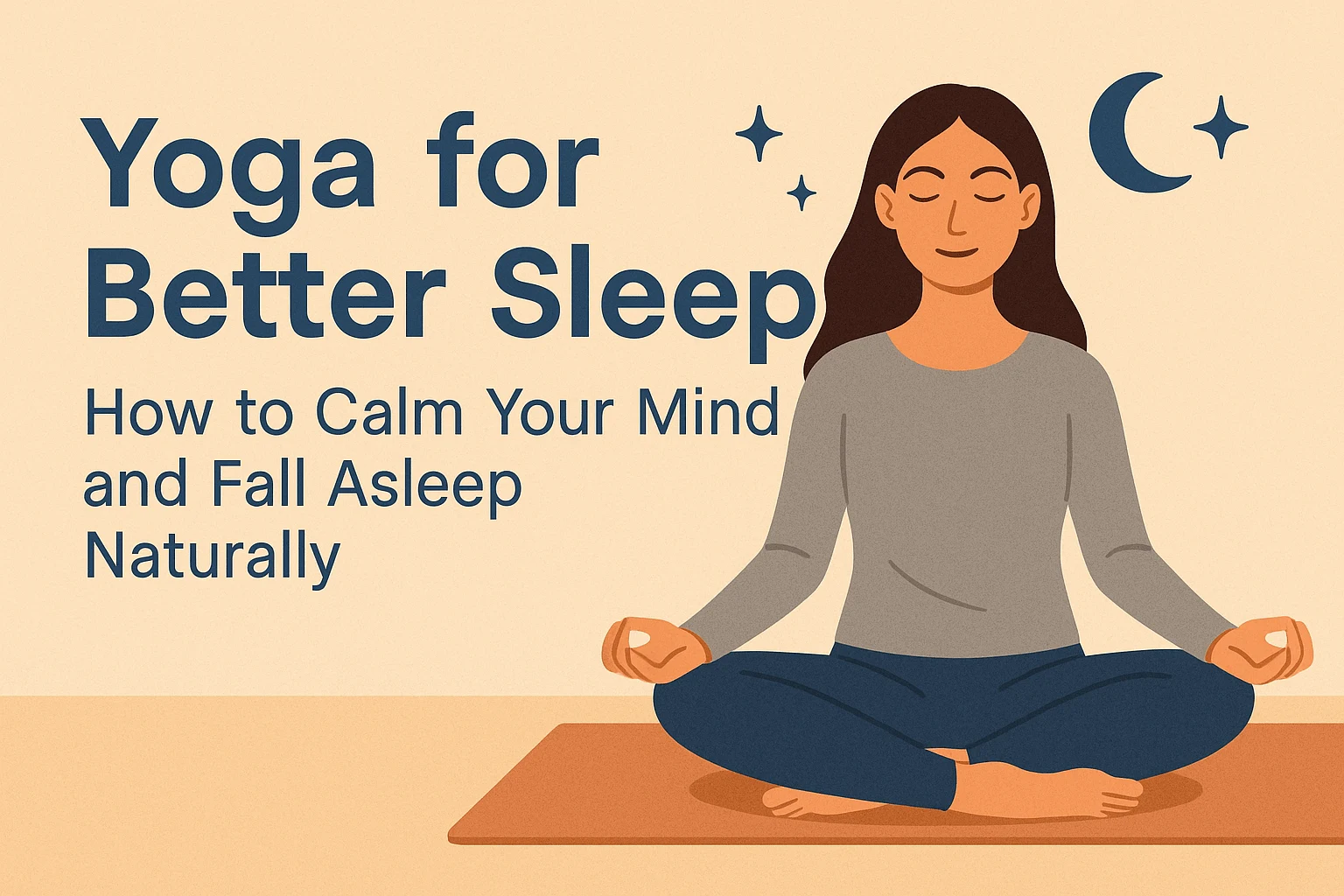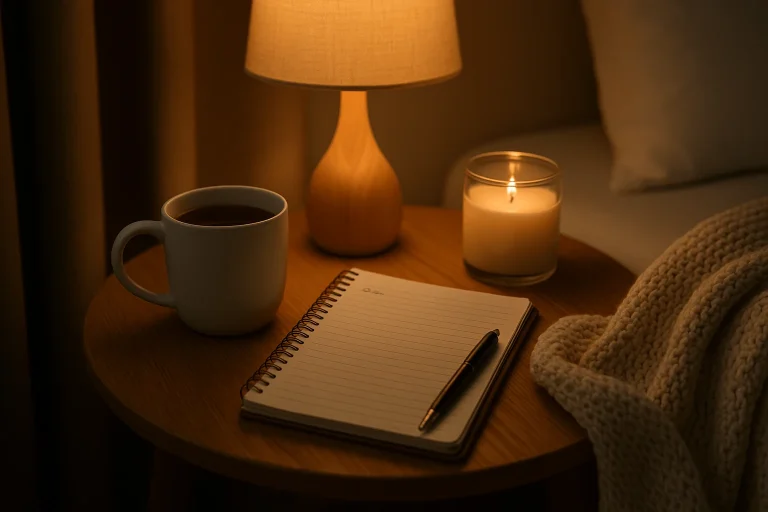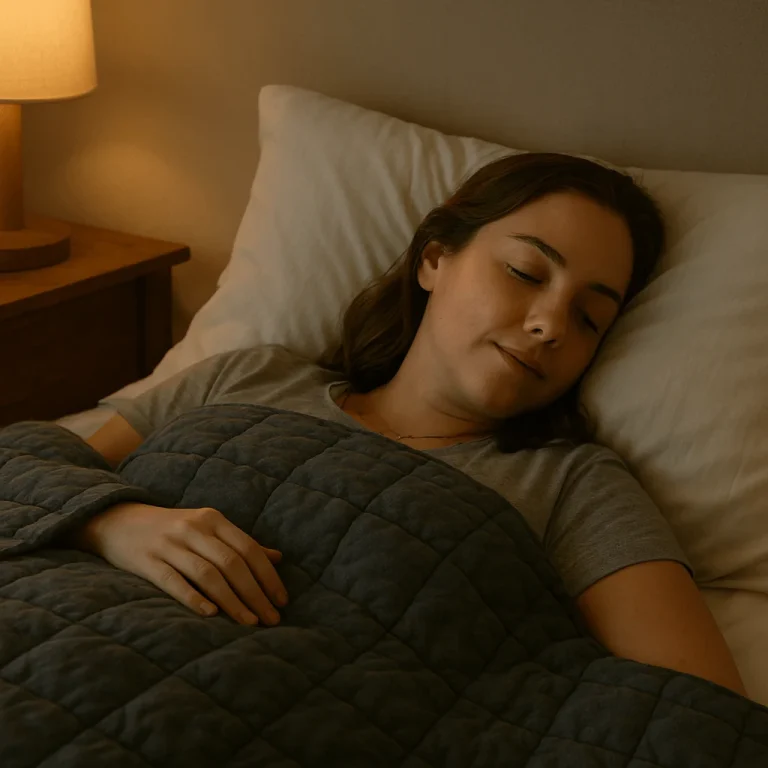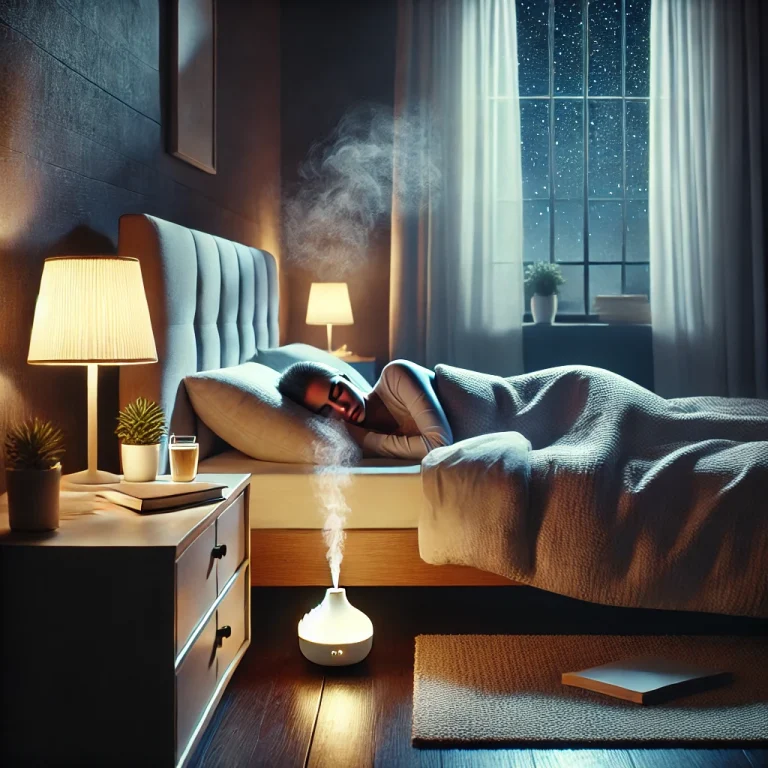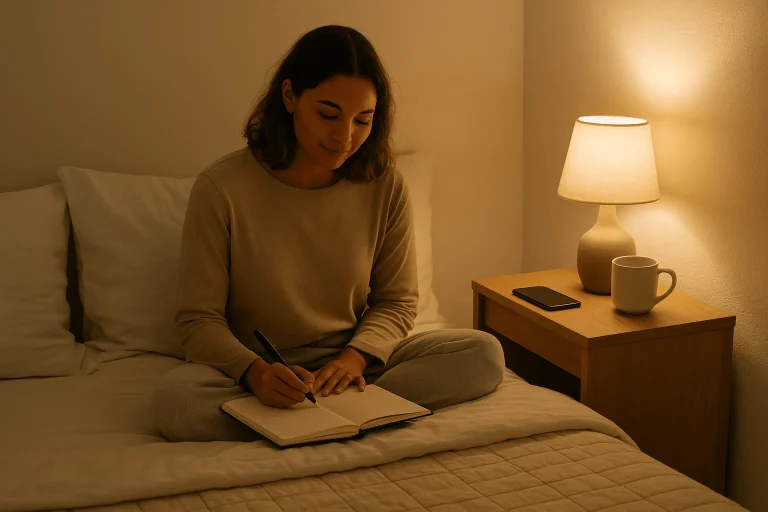Yoga for Better Sleep: How to Relax Your Body and Mind
If your nights feel restless and your mind won’t slow down, you’re not alone. Many people struggle to unwind even when they’re completely exhausted.
That’s where yoga for better sleep can help — not as a workout, but as a way to calm your body and quiet your thoughts. With slow breathing and simple, supported poses, yoga tells your nervous system it’s safe to rest.
In this guide, you’ll learn how yoga eases tension, balances your body, and helps you drift into deeper, more peaceful sleep.
The Science Behind Yoga for Better Sleep
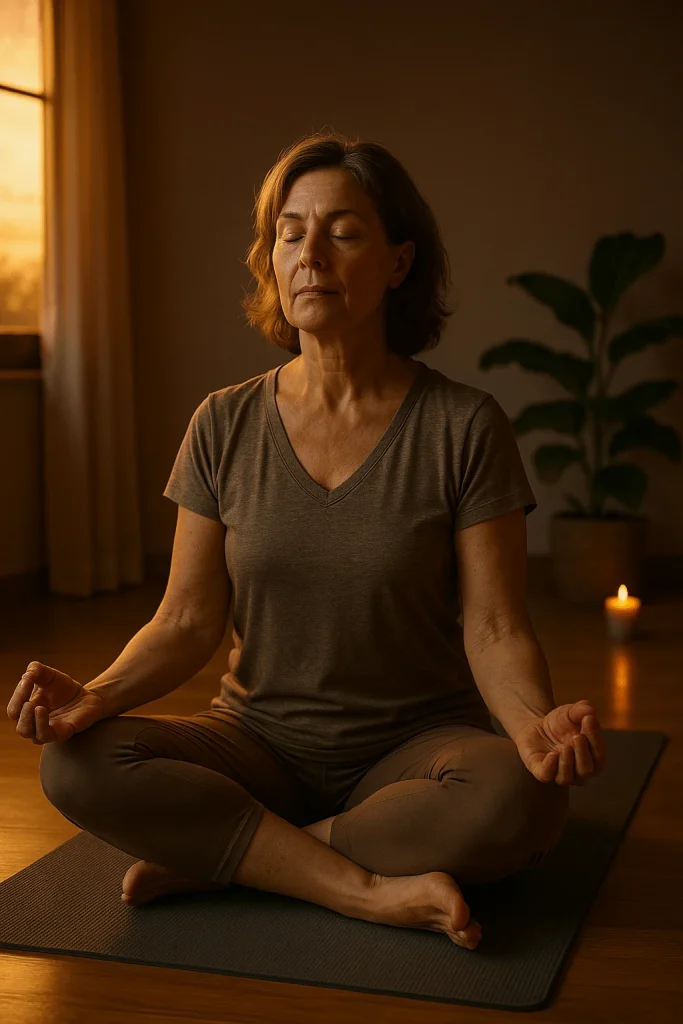
When sleep doesn’t come easily, it’s often because your body and mind are still in “go” mode. Yoga helps shift that.
At its core, yoga activates the parasympathetic nervous system — the part responsible for rest and recovery. Slow breathing and mindful movement lower cortisol, your main stress hormone, while increasing melatonin, the hormone that signals it’s time to sleep.
Studies show that regular yoga practice can:
- Shorten the time it takes to fall asleep
- Improve overall sleep quality and duration
- Reduce nighttime awakenings and anxiety
As you move and breathe intentionally, your heart rate slows, muscles loosen, and your thoughts begin to settle. Over time, this nightly rhythm helps reset your internal clock — making it easier to fall asleep and wake up feeling restored.
Why Timing and Intention Matter
Not all yoga supports sleep in the same way — what truly matters is when and how you practice.
Slow, unhurried movement in the evening helps your body shift from energy to ease. If you’ve ever done a strong flow or hot yoga class too late in the day, you’ve probably noticed how alert it can leave you. That’s because heat and fast movement raise your heart rate and core temperature — the opposite of what your body needs before bed.
Instead, think of your evening practice as a transition. Dim the lights, silence notifications, and roll out your mat in a quiet space. You might play soft music or simply enjoy the silence. These cues help your brain recognize it’s time to relax.
When you approach yoga with the intention to unwind rather than perform, your body naturally follows. Over time, bedtime starts to feel easier — a quiet moment to breathe, stretch, and leave the day behind.
Best Yoga Poses for Deep, Restful Sleep
When you practice yoga before bed, the goal isn’t to stretch deeply — it’s to relax completely. These poses invite your body to release the day and settle into stillness.
Child’s Pose (Balasana)
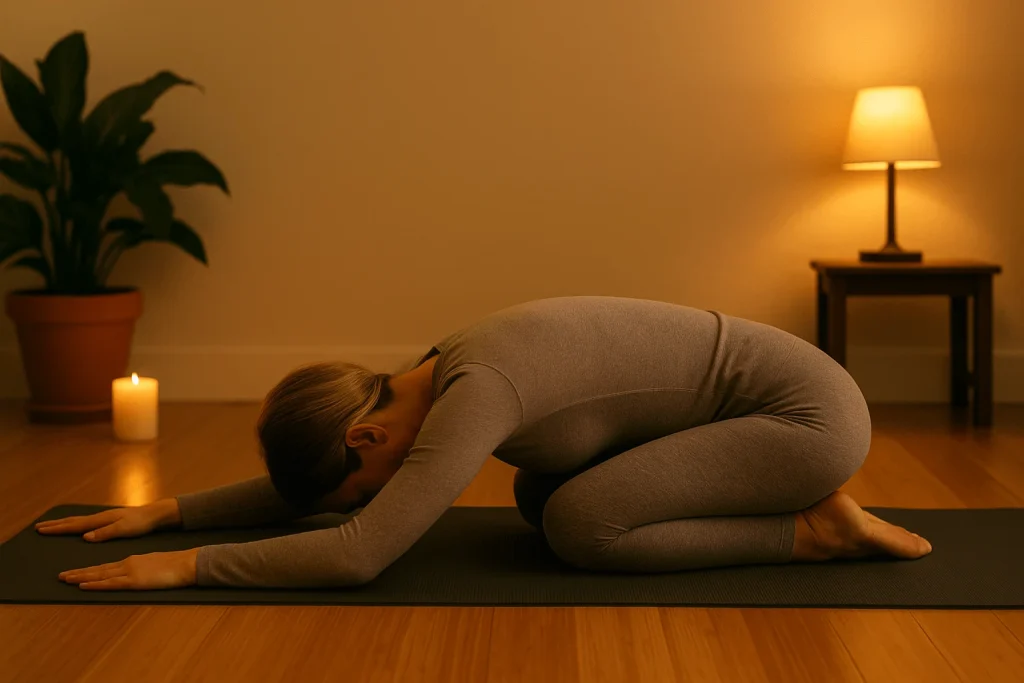
Kneel on your mat, bring your big toes together, and fold forward, resting your forehead on the mat or a pillow. Let your shoulders drop and your breath slow.
This quiet pose encourages calm and helps your body release the weight of the day.
Legs-Up-the-Wall (Viparita Karani)
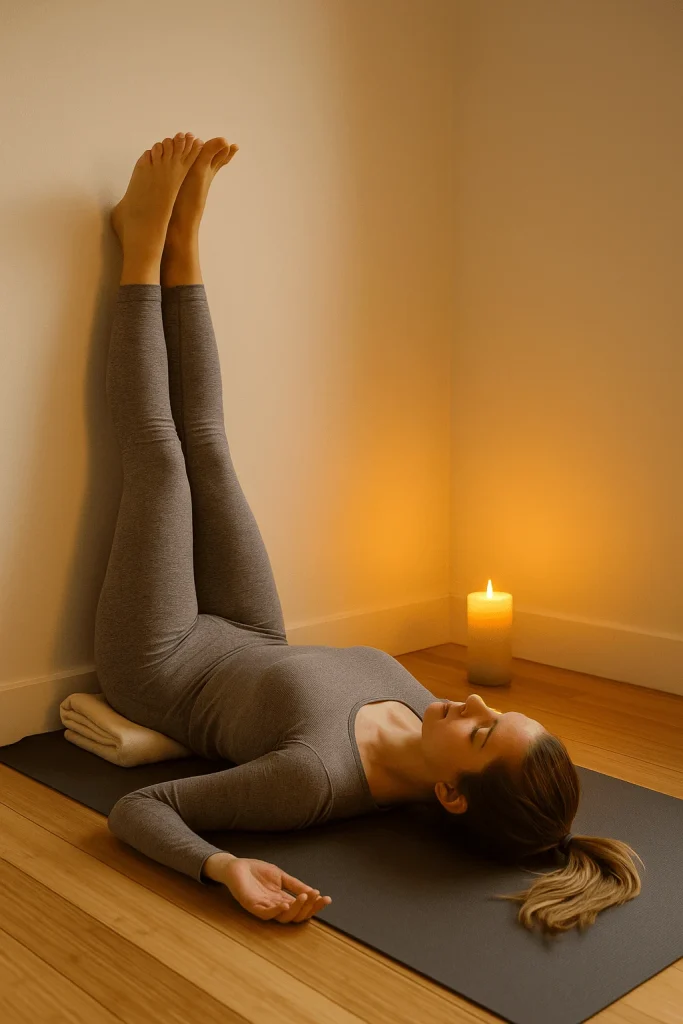
Sit close to a wall, then lie back and rest your legs gently against it. Place a folded blanket or small pillow under your hips for support.
This simple inversion improves circulation, eases tired legs, and soothes your nervous system.
Reclined Bound Angle (Supta Baddha Konasana)
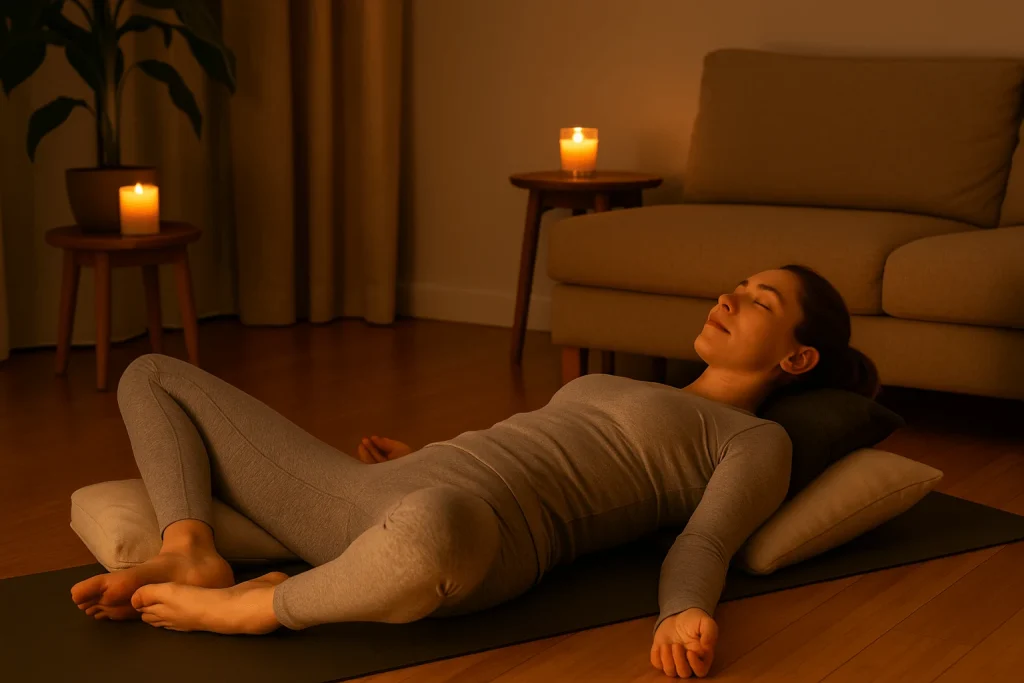
Lie on your back and bring the soles of your feet together, letting your knees fall open. Support them with pillows or blankets if needed.
As your hips soften and your breath deepens, your body begins to feel heavy and grounded.
Cat–Cow (Marjariasana–Bitilasana)
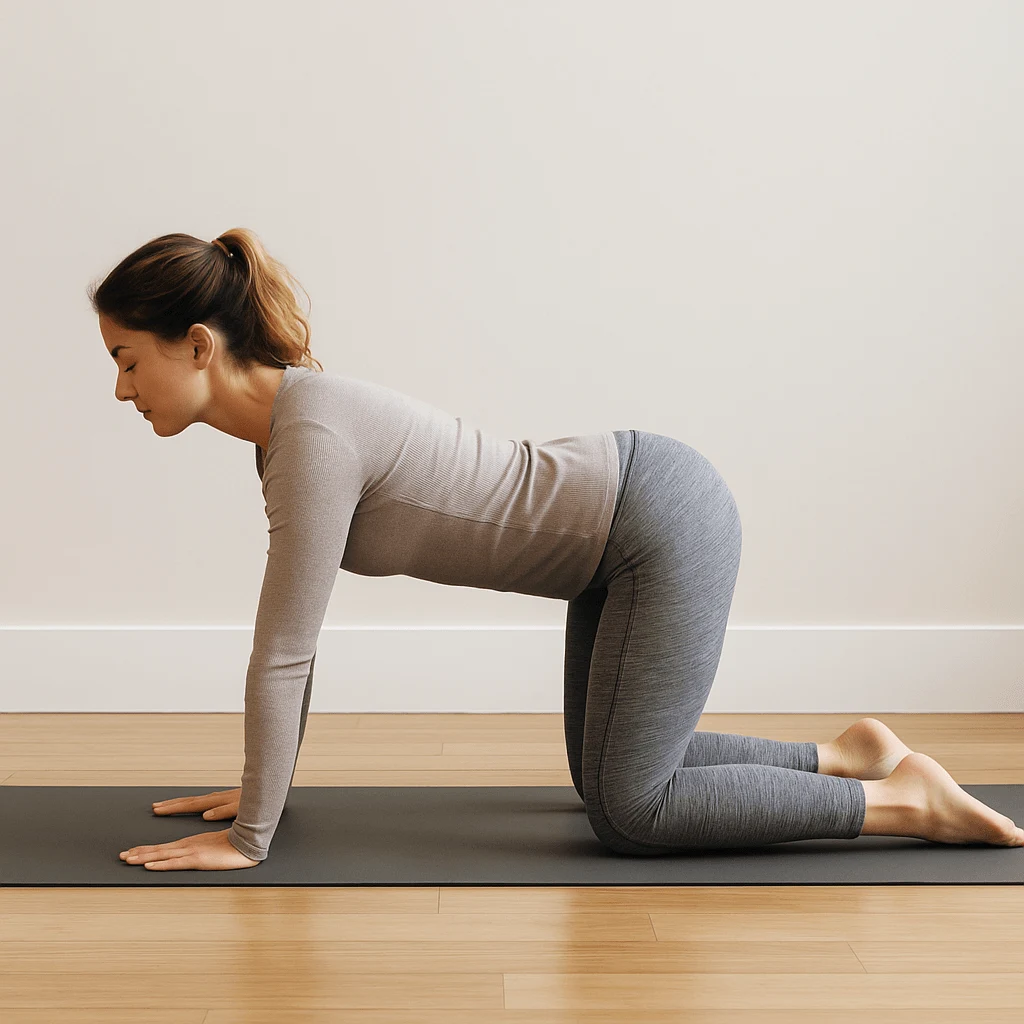
Begin on hands and knees. Inhale as you arch your back slightly, and exhale as you round your spine. Move slowly, matching breath to movement.
This relaxed motion releases tension through your spine and connects you to the rhythm of your breath.
Supported Savasana
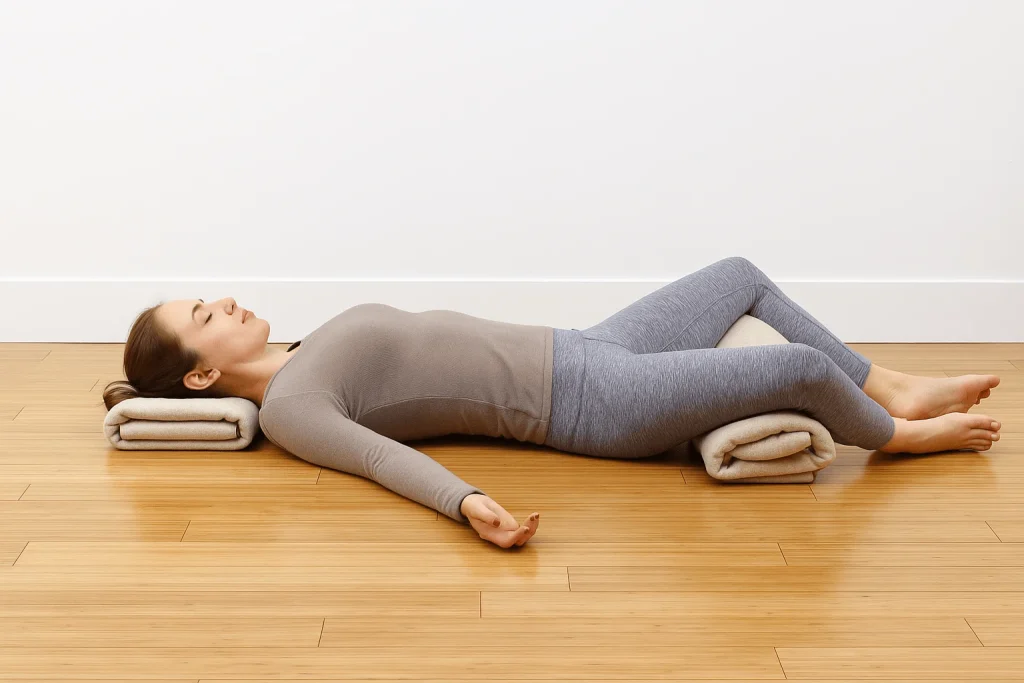
Lie on your back with a rolled blanket under your knees and another under your head. Let your arms rest comfortably by your sides, palms open.
This final resting pose slows your heart rate and signals to your body that it’s time for sleep.
You can move through these poses in 10–15 minutes or choose just one when you need to unwind. There’s no perfect sequence — only the one that helps you feel safe, supported, and ready for rest.
Related Posts :
- How to Use Meditation for Better Sleep: A Beginner’s Guide
- How to Personalize Your Nighttime Routine for Maximum Sleep Quality
Restorative Yoga for Sleep: The Deep Relaxation Approach
If your body feels tense or your mind has trouble quieting down, restorative yoga for sleep can be a peaceful reset.
Unlike active yoga, restorative practice is about stillness and support. You use props — pillows, bolsters, or blankets — to hold each pose comfortably so your body can fully let go.
The power of restorative yoga lies in the pause. As your muscles soften and your breath slows, your nervous system naturally shifts into the “rest and digest” state that supports sleep. Even ten minutes can make a noticeable difference.
Try this calming sequence before bed:
- Supported Child’s Pose: Rest your chest on a pillow and your head to one side.
- Legs-Up-the-Wall: Let your legs rest against the wall and focus on each slow exhale.
- Reclined Twist: Lie on your back, knees to one side, arms open in a T-shape.
- Supported Savasana: Lie on your back with a rolled blanket under your knees and an eye pillow if you’d like.
Yoga Nidra for Sleep
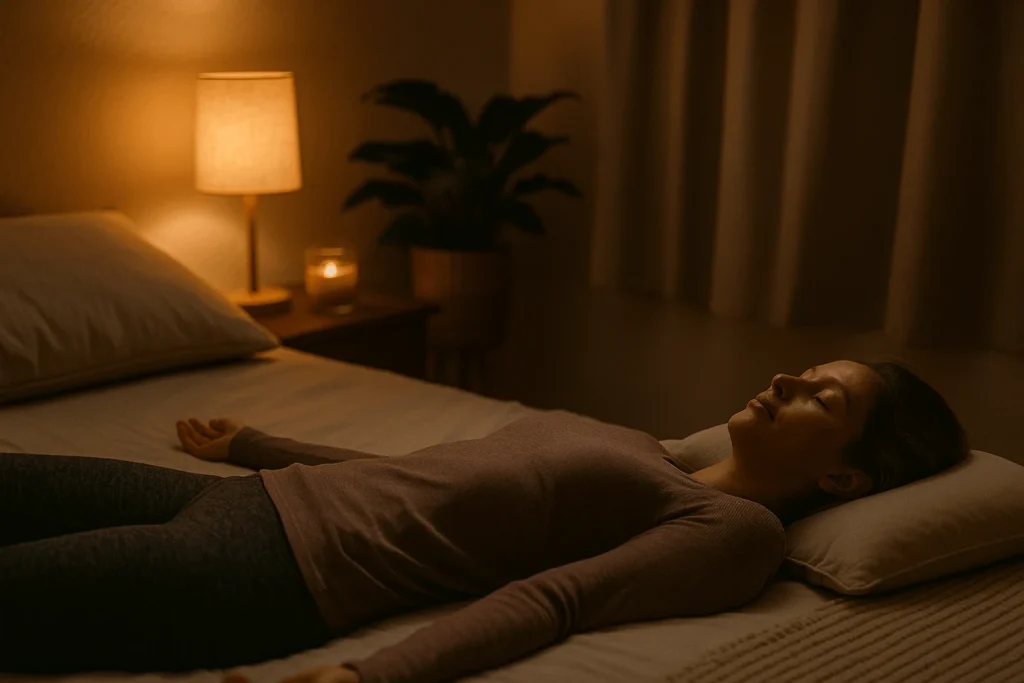
If your mind feels too awake to rest, Yoga Nidra for sleep can help you drift from alertness into calm.
Sometimes called “yogic sleep,” this practice is a guided form of deep relaxation done lying down — often in bed or in Savasana. You simply listen as a soothing voice leads you through slow breathing, gentle body awareness, and quiet visualization. With each breath, your body softens and your mind begins to let go.
Research shows that Yoga Nidra helps reduce stress-related brain activity and improve both sleep quality and total rest time. Unlike seated meditation, there’s no need to concentrate or hold a posture — you just allow yourself to be guided, breathing slowly as your body unwinds.
Here’s how to try it:
- Lie down comfortably and close your eyes.
- Take a few slow, even breaths to settle in.
- Press play on a guided recording — for example, this 15-minute Yoga Nidra video walks you through body awareness from toes to head.
- If your thoughts start to wander, simply come back to the sound of the voice.
Even ten minutes can quiet racing thoughts and reduce tension. Many people use Yoga Nidra before bed or when they wake during the night. Over time, it helps your body relearn true rest — letting sleep return naturally, without force.
Practicing Yoga Nidra for sleep works best when paired with healthy nighttime habits. If you’d like to take it a step further, explore 8 Sleep Hygiene Tips for Better Sleep and Energy Tomorrow — simple practices that help your body relax naturally and make every night’s rest more restorative.
Common Mistakes to Avoid
When you’re using yoga to improve sleep, small adjustments can make a big difference.
1. Practicing Too Late or Too Fast
If you move through poses quickly or finish right before bed, your body may stay alert. End your routine at least 30 minutes before sleep to give yourself time to settle.
2. Treating Yoga Like a Workout
Bedtime yoga isn’t about effort — it’s about ease. Choose slower poses and focus on breathing rather than stretching deeply.
3. Skipping the Relaxation Phase
Finishing without rest can leave your body half-awake. Always include a few minutes in Savasana or slow breathing to complete your practice.
4. Expecting Instant Results
Yoga builds its effects over time. Even if sleep doesn’t come easily at first, you’re helping your body unlearn tension and relearn calm.
5. Forgetting the Bigger Picture
Yoga is just one part of your sleep routine. Combine it with good habits — steady bedtime, low light, no caffeine — for lasting results.
Who Should Be Careful (and When to Seek Help)
Yoga is safe for most people, but listening to your body always comes first. If something doesn’t feel right, adjust or skip it. The goal is rest, not strain.
If You Have Injuries or Chronic Pain
Avoid deep twists or strong backbends if you have neck, shoulder, or spine issues. Use props and focus on supported poses.
If You’re Pregnant
Restorative yoga is usually safe, but avoid lying flat on your back in later trimesters. Choose prenatal-friendly variations and check with your healthcare provider.
If You Have Ongoing Sleep Problems
If insomnia lasts for weeks or you wake often and can’t fall back asleep, yoga can help but might not be the full answer. Talk with a doctor or sleep specialist — understanding the cause helps yoga work even better.
Related : The Most Overlooked Sleep Disorders ( and How to Spot Them Early)
Let Yoga Guide You Toward Better Sleep
Better sleep doesn’t always start in bed — sometimes, it begins on the mat.
When you practice yoga for better sleep, even for a few quiet minutes, you teach your body how to unwind again. Your breath slows, your mind softens, and the day’s tension starts to fade.
Over time, those small moments of stillness begin to shape your nights. You may notice you fall asleep a little faster, wake less often, and greet the morning feeling more refreshed. It’s not about perfection — it’s about showing up, breathing deeply, and letting yoga become part of your nightly rhythm.
FAQs About Yoga and Sleep
How can yoga help you sleep?
Yoga helps you sleep by calming your nervous system, lowering stress hormones, and easing muscle tension. Slow, mindful movement and deep breathing signal your body that it’s safe to rest, helping you fall asleep naturally and stay asleep longer.
Which yoga is best for sleeping?
Restorative yoga, gentle Hatha, and Yoga Nidra are the best forms of yoga for better sleep. These calm, slow-paced styles use supported poses and breathwork to quiet your mind and prepare your body for deep rest.
Is it good to do yoga right before bed?
Yes — as long as it’s slow and soothing. Doing light yoga about 30 to 60 minutes before bed helps you unwind, lower your heart rate, and relax your body. Avoid fast or heated yoga, which can make you feel more awake.
How to sleep fast in 5 minutes yoga?
To fall asleep faster, try a 5-minute flow: Child’s Pose → Legs-Up-the-Wall → slow belly breathing. Focus on long, steady exhales. This mini routine activates your body’s relaxation response and helps you drift off more easily.
What is bedtime yoga?
Bedtime yoga is a short evening routine that combines relaxed stretching and steady breathing to help your body release tension. Practicing nightly creates a calming signal that it’s time for rest.
Which mudra is for sleep?
The Shakti Mudra is known for promoting relaxation and better sleep. Tuck your thumbs into your palms, then lightly press your ring and little fingers together. Hold for a few minutes while breathing slowly to quiet your mind before bed.

